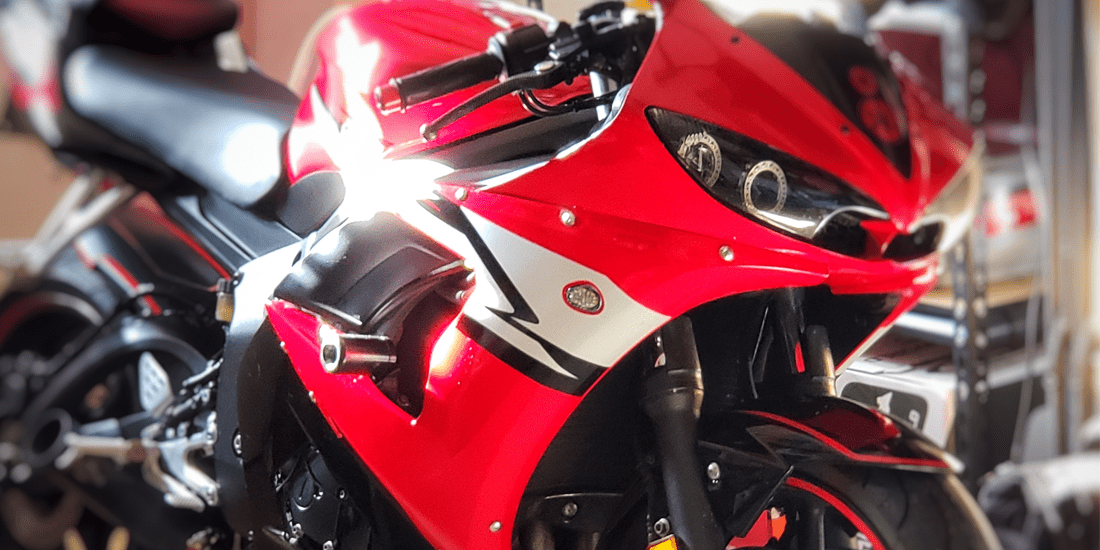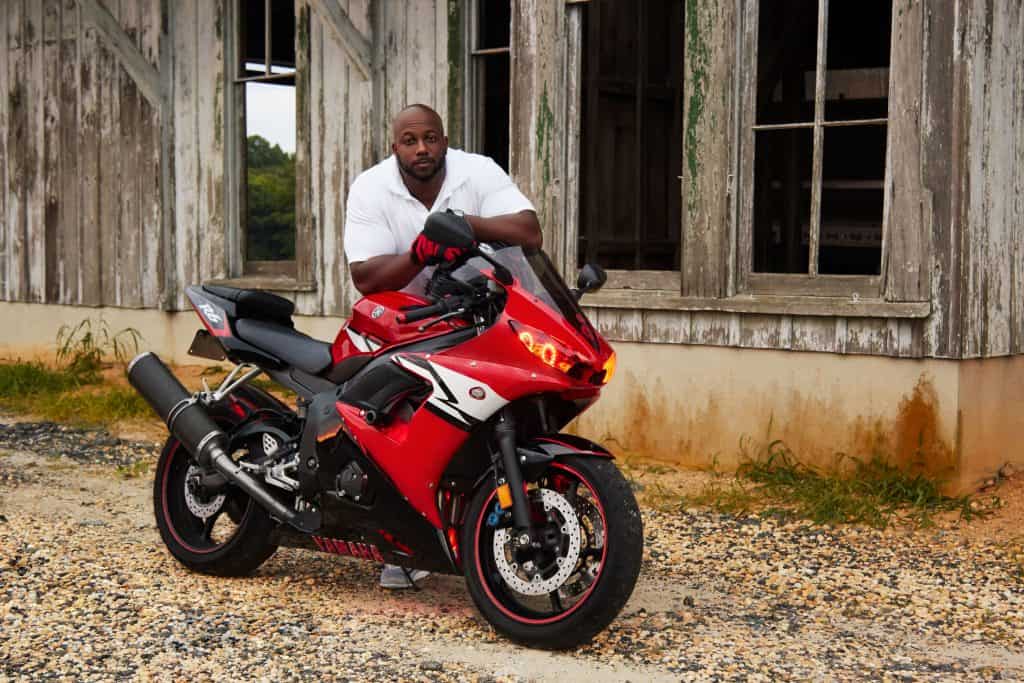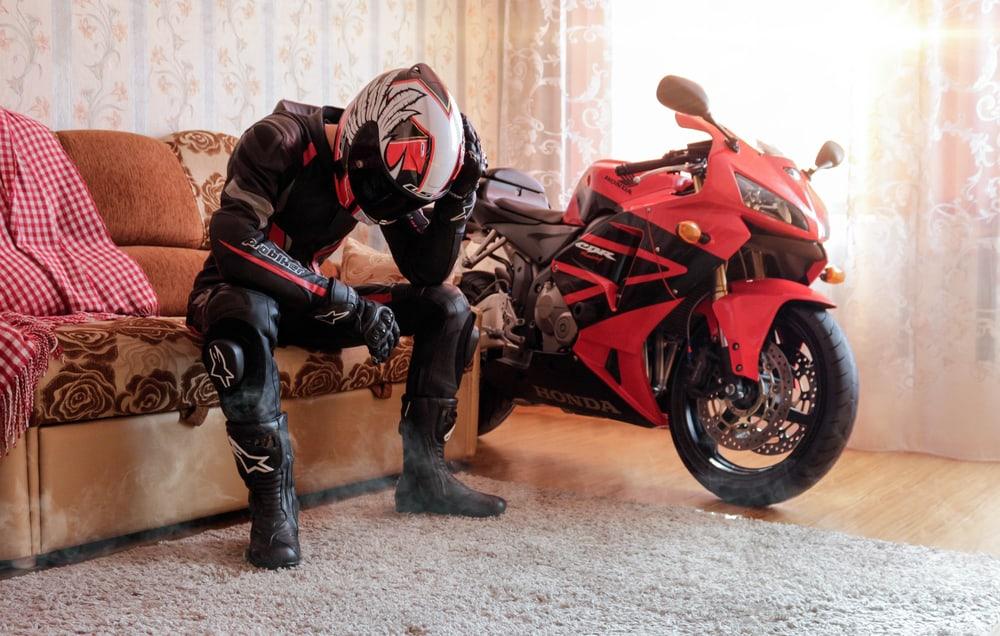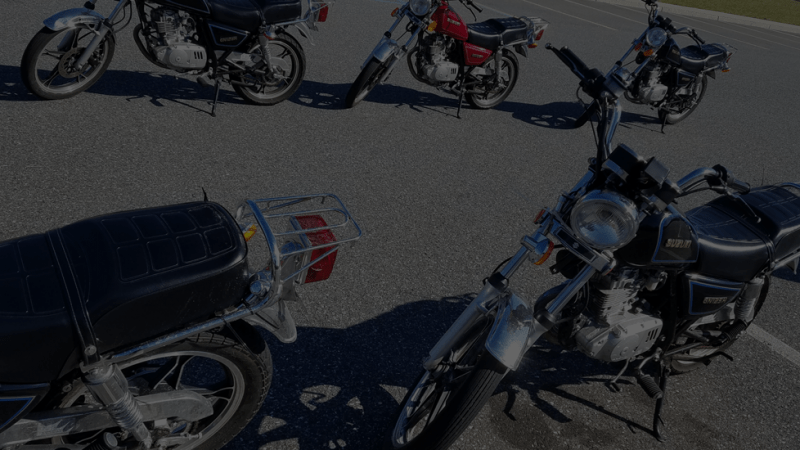The exhilarating rush of leaning into a corner, the wind whipping through your hair, and the undeniable thrill of commanding a powerful machine – these are just a few of the reasons why sportbikes hold such a special place in the hearts of many riders. However, with the incredible performance and sharp handling of these motorcycles comes a heightened degree of risk for injuries.
This article delves into the world of sportbike injuries, equipping you with the knowledge and practical steps to navigate the journey safely. We’ll explore the most common injuries associated with sportbike riding, delve into preventative strategies, and shed light on treatment options. By understanding the risks and taking necessary precautions, you can continue to enjoy the thrill of the ride while minimizing the chances of encountering these injuries.
Key Takeaways:
- Common sportbike injuries include wrist/hand, shoulder, neck/back, and leg/foot injuries.
- Prevent injuries through proper gear, ergonomic bike setup, strengthening exercises, and safe riding practices.
- Seek immediate medical attention for any suspected injury.
- Treatment options include rest, pain management, physical therapy, and surgery (if needed).
- Prioritize safety by learning continuously, maintaining your bike, and riding with responsible individuals.
Comparison Table: Common Sportbike Injuries vs. Preventative Measures
| Injury | Preventative Measures |
|---|---|
| Wrist and Hand Sprains/Fractures | Wear protective gloves, maintain proper grip on handlebars, avoid over-torquing controls. |
| Shoulder Strains/Dislocations | Strengthen core and shoulders, maintain upright posture, avoid locking elbows. |
| Neck and Back Pain/Herniated Discs | Maintain neutral posture, avoid hunching, strengthen core muscles, take regular breaks on long rides. |
| Leg and Foot Sprains/Fractures | Wear sturdy motorcycle boots, maintain proper footpeg placement, avoid excessive shifting or braking. |

Comparison Table: Common Sportbike Injuries vs. Preventative Measures
The Landscape of Sportbike Injuries: Understanding Common Risks
The unique design and riding style of sportbikes expose riders to specific physical demands and potential hazards. Let’s delve into the most prevalent forms of injuries encountered by sportbike enthusiasts:
1. Upper Body Injuries:
-
Wrist and Hand: The aggressive riding position, coupled with the potential for falls, makes these areas particularly vulnerable. Common injuries include sprains, fractures, and carpal tunnel syndrome, caused by repetitive strain on the nerves and tendons.
-
Shoulder: Similar to wrist and hand injuries, the shoulders bear the brunt of the forward-leaning posture and potential impact in a fall. Dislocations, strains, and rotator cuff injuries are common occurrences.
-
Neck and Back: Long rides with a hunched posture can put immense strain on these areas, leading to pain, stiffness, and even herniated discs. Improper core engagement further exacerbates the situation.
2. Lower Body Injuries:
- Leg and Foot: While less frequent than upper body injuries, leg and foot injuries can happen in accidents or due to repetitive motions while shifting and braking. These can include ankle sprains, fractures, and nerve damage, causing pain and limiting mobility.
3. Additional Injuries:
- Head Injuries: Although mitigated by wearing a helmet, head injuries can still occur in severe accidents, highlighting the importance of choosing and using a DOT-approved helmet consistently.
4. Psychological Trauma:
- Accidents, even minor ones, can cause emotional distress and even post-traumatic stress disorder (PTSD) in some individuals. Seeking professional help is crucial if you experience emotional difficulties after an accident.
Safeguarding the Ride: Proven Strategies for Injury Prevention
Knowing the risks is essential, but the true power lies in taking proactive steps to prevent them. Here are some key strategies you can implement:
1. Gear Up for Protection:
- Helmet: Invest in a high-quality, DOT-approved helmet that fits snugly but comfortably. Replace it every five years or after any significant impact.
- Protective Clothing: Opt for abrasion-resistant leather or heavy textile gear that covers your entire body. Leather offers superior protection but can be warmer in hot weather.
- Footwear: Wear sturdy motorcycle boots that provide ankle support and good grip on the footpegs.
2. Ergonomics Matter:
- Bike Fit: Ensure your bike is adjusted to your specific body measurements. This includes proper handlebar height, seat position, and footpeg placement. An ergonomically correct setup reduces strain on your body and allows for better control.
- Maintaining Posture: Maintain a neutral, upright posture while riding. Avoid hunching your back or locking your elbows, as this can lead to fatigue and increase the risk of injury.
3. Strengthen Your Body:
- Targeted Exercises: Regularly strengthening your core, back, and shoulders improves your riding posture and endurance. This enhances control and reduces the risk of fatigue-induced errors.
- Stretching: Don’t underestimate the power of stretching. Regularly stretching improves flexibility and range of motion, reducing the risk of strains and muscle fatigue.
4. Master Your Skills:
- Safety Courses: Enroll in a motorcycle safety course to learn proper braking, cornering, and maneuvering techniques. These courses hone your skills and equip you with the knowledge to handle challenging situations safely.
- Practice Makes Perfect: Regularly practicing in a controlled environment builds confidence and refines your skills, allowing you to react calmly and effectively in real-world situations.
5. Listen to Your Body and the Road:
- Fatigue Factor: Avoid riding when you’re tired or under the influence of alcohol or drugs. Fatigue impairs judgment and reflexes, significantly increasing the risk of accidents.
- Stay Alert: Be mindful of your surroundings and anticipate potential hazards. Watch out for other vehicles, road conditions, and weather changes.
- Take Breaks: Schedule regular breaks on long rides. Get off the bike, stretch your legs, and rehydrate to prevent fatigue and maintain focus.
Navigating Recovery: Treatment Options for Sportbike Injuries
Despite taking all necessary precautions, accidents can still occur. If you sustain an injury while riding, immediate medical attention is crucial. A qualified healthcare professional can accurately diagnose the severity of the injury and recommend the most appropriate treatment course.
Here’s a glimpse into some common treatment options for sportbike injuries:
1. Rest and Immobilization:
- Depending on the nature and severity of the injury, the doctor might recommend rest and immobilization. This allows your body time to heal and prevents further damage. Immobilization may involve casts, splints, or slings.
2. Pain Management:
- Managing pain is essential for promoting healing and comfort. This may involve medication like pain relievers, anti-inflammatory drugs, or muscle relaxants. Topical pain relief options like creams and gels may also be used.
3. Physical Therapy:
- Physical therapy plays a crucial role in regaining strength, flexibility, and range of motion after an injury. A physical therapist will create a personalized rehabilitation program that includes exercises and modalities like ultrasound or electrical stimulation to facilitate healing and recovery.
4. Surgery:
- In some cases, surgery might be necessary to repair fractures, torn ligaments, or other damage that cannot heal on its own. This is a complex decision, and the doctor will discuss the risks and benefits thoroughly with you before proceeding.
5. Emotional Support:
- Don’t underestimate the impact of emotional trauma after an accident. Consider seeking professional help from a therapist to address any anxiety, depression, or post-traumatic stress disorder (PTSD) that you might be experiencing.

Beyond the Finish Line: Embracing a Culture of Safety
Beyond the Finish Line: Embracing a Culture of Safety
The exhilarating world of sportbike riding demands a commitment to safety. By adopting the strategies outlined above, you minimize the risks associated with this exhilarating activity. Remember, the thrill of the ride is amplified when coupled with responsible and informed practices.
Here are some additional points to consider:
- Community Connection: Surround yourself with responsible riders who prioritize safety. Sharing experiences and learning from others can reinforce safe riding practices.
- Continuous Learning: Continuously educate yourself on safety advancements, proper riding techniques, and hazard avoidance strategies.
- Regular Maintenance: Ensure your bike is in proper working order. Regular maintenance checks and addressing any potential issues before hitting the road are crucial for safety.
Riding a sportbike is an activity that requires a balance of skill, awareness, and responsibility. By understanding the potential risks, implementing preventive measures, and seeking professional help when necessary, you can maximize your enjoyment on two wheels while prioritizing the most important aspect – your safety. Remember, the journey is just as important as the destination, and safe riding practices ensure that you can continue to enjoy the thrill of riding for years to come.
6 FAQs: Gearing Up for Safe Sportbike Riding
-
What type of helmet should I wear?
- Always wear a DOT-approved helmet that fits snugly but comfortably. Replace it every five years or after any significant impact.
-
Is leather gear always necessary?
- While leather offers superior abrasion resistance, heavy textiles can also provide adequate protection. Choose gear that fits well and offers sufficient coverage.
-
How often should I stretch before and after riding?
- Perform dynamic stretches before riding to warm up your muscles and static stretches after riding to improve flexibility and prevent stiffness.
-
Can I skip safety courses if I’m an experienced rider?
- Safety courses are valuable for all riders, regardless of experience level. They can help you refine your skills, learn new techniques, and refresh your knowledge on safe riding practices.
-
How long should I rest after a minor injury?
- Follow your doctor’s instructions regarding rest and activity limitations. Ignoring this advice can hinder healing and increase the risk of complications.
-
When should I seek professional help for emotional trauma after an accident?
- If you experience any emotional distress, anxiety, depression, or difficulty coping after an accident, don’t hesitate to seek professional help from a therapist.













